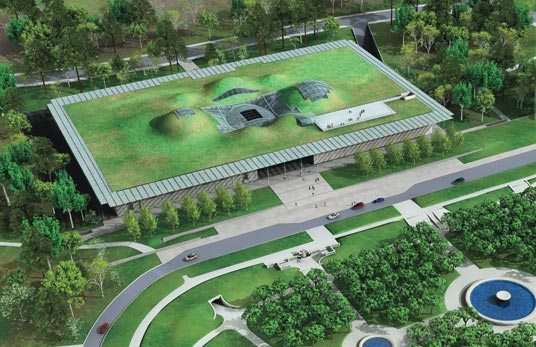Green tech an integral part of new California Academy of Sciences building

When I still lived in the San Francisco Bay area, I would often wander up to Golden Gate Park and the museums and exhibits nearby. One of my favorite “historic” buildings in the city was the California Academy of Sciences, which now has been completely overhauled with a green bent.
Much of the technology in the new building, which opened in late September, was dreamed up in order to support the building’s Leadership in Energy and Environmental Design (LEED) Platinum certification. Here's more about the overall architectural design, which boasts a living roof and recycled blue jeans in the walls for insulation. Approximately 90 percent of the offices use natural lighting. Solar is part of the design and the building supposedly uses about 30 percent less energy than similar facilities.
The technology part of the implementation was handled by TEECOM Design Group. The green intentions of the architects impacted the data center, the security systems, communications, the works when it came to the technology infrastructure, according to TEECOM founder David Marks.
At the heart of the installation is a unified communications network that integrates all the data across the facility, Marks says. Not only does this network (which leverages Cisco technology infrastructure) run the organization’s voice over IP applications, including first-responder types of emergency alert services that are required in public buildings, it also saved the museum up to $1 million in a separate audio-visual infrastructure.
The technology will be used to drive applications both within and without the museum walls. So, for example, the museum includes a wireless infrastructure that lets you download tour guides to your iPod s saving on paper. You can buy tickets wirelessly, and the museum has been able to centralize the management of all the information stored in its archives. I'm sure there's a lot more to come.
